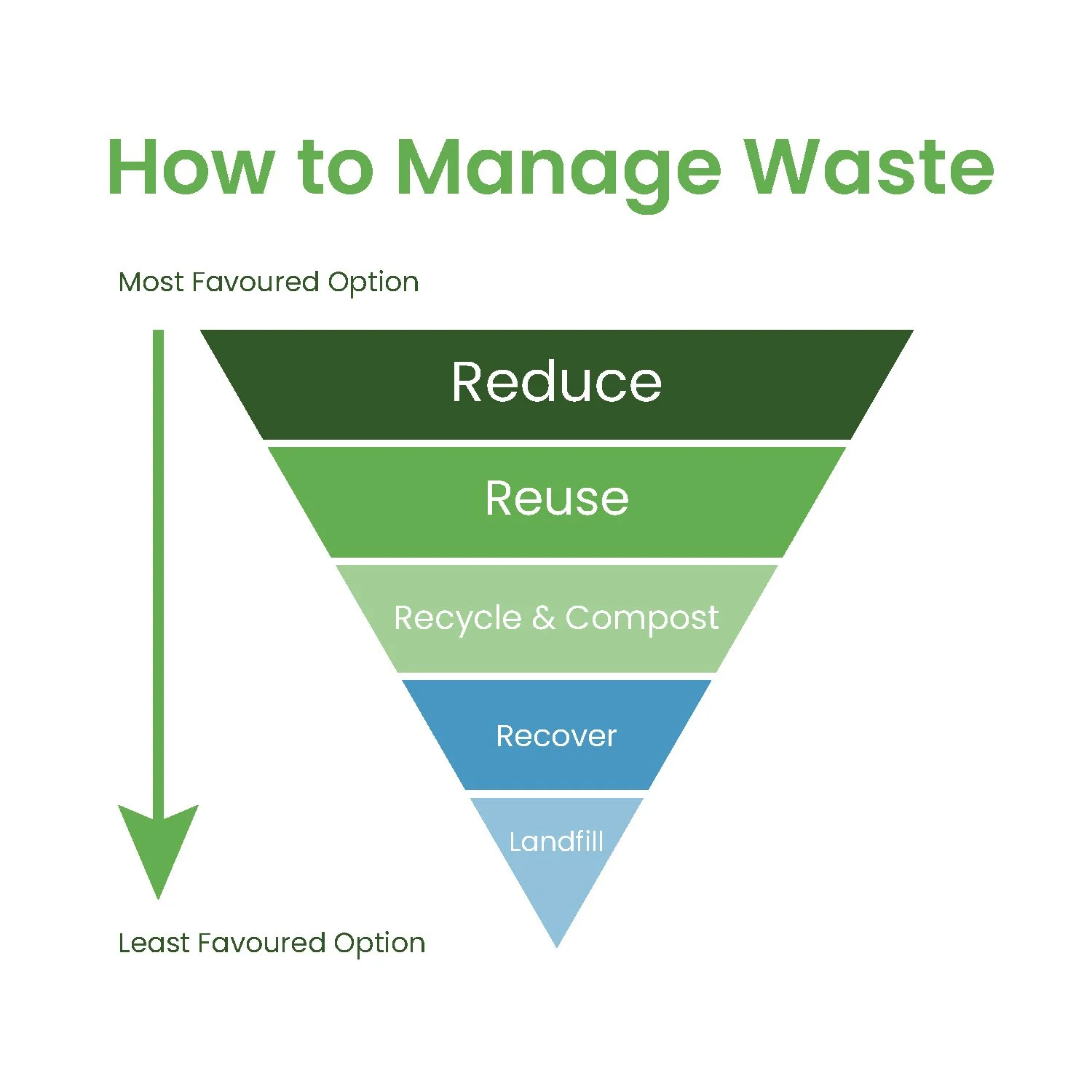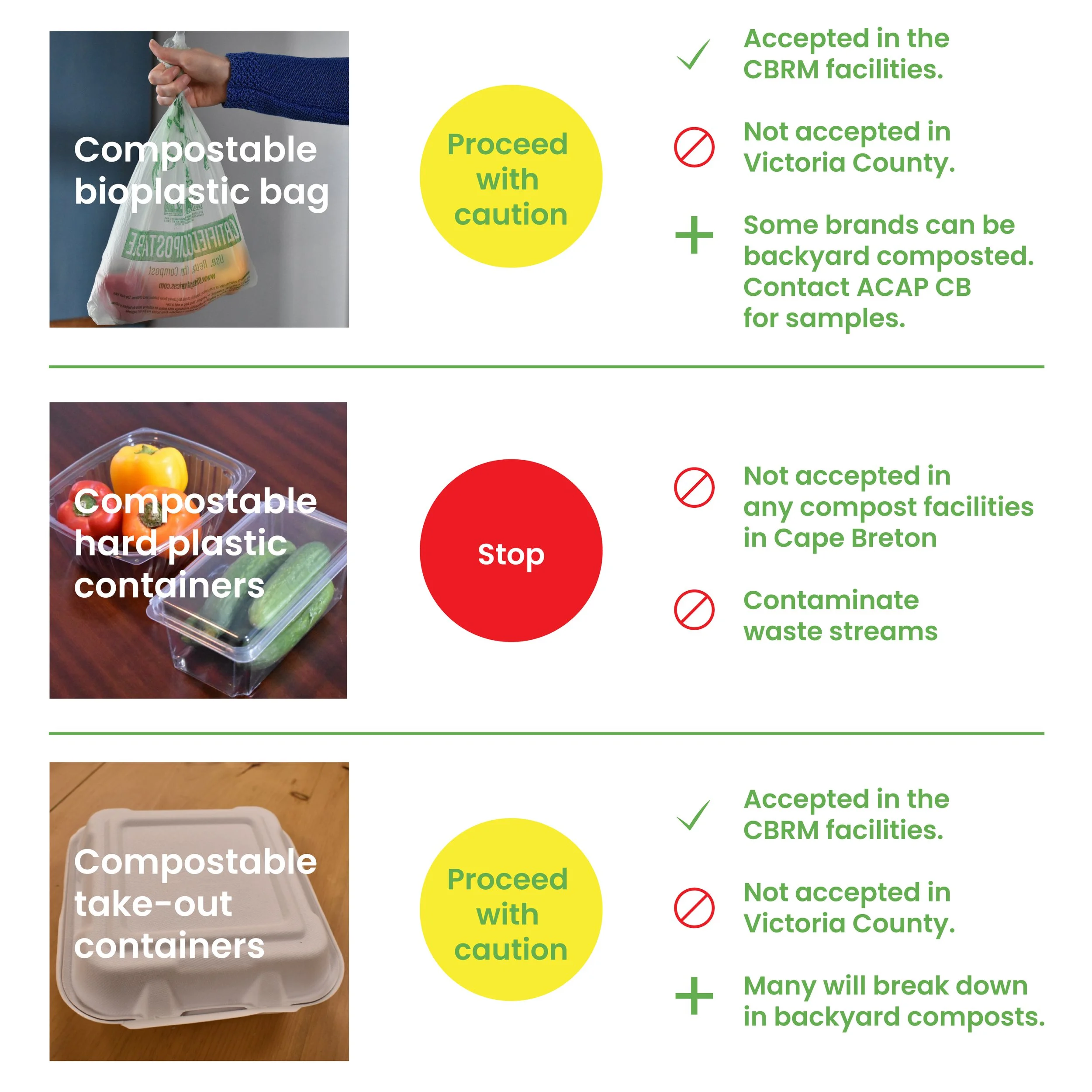
For Producers and Retailers
Choosing eco-friendly products can seem overwhelming. Unfortunately, that’s because there are currently few ideal choices.
Based on the waste hierarchy, we propose four solutions to the problem of single-use plastic:
Reduce or eliminate it.
Does each item of plastic you’re using have a purpose? Can you switch to options with less plastic? France has currently banned some types of plastic packaging for produce. ACAP CB will be monitoring the research emerging from France’s experiment to determine food waste impacts and make recommendations.
Reuse it
Swap single-use containers for reusable ones and create a zero-waste loop. While covid-19 has created some roadblocks for zero-waste systems, we’re beginning to see the light. Farmer’s Markets and the Food Hub are good systems for experimentation with closed loop packaging systems. We know that some food safety guidelines in Nova Scotia currently prevent serious consideration of zero waste systems. Clearly, regulatory change is needed.
Recycle it.
Switch out products to a preferred plastic, such as PET (polyethylene terephthalate, number 1) which can be recycled into higher quality products. Choose post-consumer (already recycled content) where possible. If you currently use any black plastic, make a rapid switch to clear or white. Black plastic is nearly unrecyclable: the black dye can’t be removed, the market for it is small, and it’s expensive to sort.
Compost it.
Because of issues of food contamination in plastics and recent innovations in “upcycling” of scraps, we project that compostable single-use bioplastics will have a future in produce packaging. BUTs are needed.
There are a lot of poor options on the market and most products are not accepted by our solid waste facilities. If you’re thinking about making a switch to compostable bioplastic, we urge you to read the following information carefully.
There are a number of clear, hard bioplastic “clamshell” containers on the market. Despite their marketing as eco-friendly, many do not break down in composting facilities. We do not recommend purchasing these products. Many options are only 99% compostable.
Bioplastic compostable bags are only accepted at the Cape Breton Regional Municipality composting facility. Victoria County does not accept these in their green bags! ACAP Cape Breton has done research and experiments with compostable bio plastic bags. For more information, click here.
Here is a short-hand guide to some of the most common eco friendly products
Are you a retailer selling packaged take-out foods? The Understanding Packaging Scorecard is a fantastic resource to weigh your options and determine the most sustainable solution for you.







